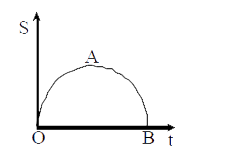For a given surface the Gauss.s Law is stated as ∮E.ds=0. From this we can conclude that:Solution in Telugu
E is necessarily zero on the surface
E is perpendicular to the surface at every point
the total flux through the surface is zero
the flux is only going out of the surface
The correct Answer is:C
Step by step video, text & image solution for For a given surface the Gauss.s Law is stated as oint E.ds= 0. From this we can conclude that: by Physics experts to help you in doubts & scoring excellent marks in Class 12 exams.
Topper's Solved these Questions
- BOOK - AAKASH SERIESCHAPTER - ELECTRIC CHARGES AND FIELDSEXERCISE - Exercise-II56videos
ELECTRIC CHARGES AND FIELDS
- BOOK - AAKASH SERIESCHAPTER - ELECTRIC CHARGES AND FIELDSEXERCISE - Practice Exercise57videos
ELECTRIC CHARGES AND FIELDS
- BOOK - AAKASH SERIESCHAPTER - ELECTRIC CHARGES AND FIELDSEXERCISE - Assess Your Self13videos
ELECTRIC CHARGES AND FIELDS
- BOOK - AAKASH SERIESCHAPTER - DUAL NATURE OF RADIATION AND MATTEREXERCISE - PRACTICE EXERCISEX44videos
DUAL NATURE OF RADIATION AND MATTER
- BOOK - AAKASH SERIESCHAPTER - ELECTRIC FIELD AND POTENTIALEXERCISE - PROBLEMS (LEVEL-II)32videos
ELECTRIC FIELD AND POTENTIAL
Similar Questions
How many electrons must be removed from a piece of metal to give it a positive charge of 1.0×10−7C
02:14View SolutionWat is the charge acquired by a body when one million electrons are transferred to it.
03:01View SolutionUsually it is the negative charge that is transferred when two bodies are rubbed together. Can you explain why?
06:04View SolutionTwo separate monochromatic light beams A and B of the same intensity are falling normally on a unit area of a metallic surface. Their wave lengths are λA and λB, respectively. Assuming that all the incident light is used in ejecting the photoelectrons the ratio of the photoelectrons from the beam A to that from B is :
View SolutionA metal sphere with its centre at A and radius R has a charge 2q on it. The field at a point B outside the sphere is E. If another metal sphere of radius 3R and having a charge -3q is placed with its centre at point B, find out the resultant electric field at a point mid way between A and B.
04:13View SolutionIf ∮sE.ds=0 Over a surface, then
View SolutionFor a given surface the Gauss's law is stated as oint vecE.dvecA=0 . From this we can conclude that
01:17View SolutionThe graph of displacementtime for a body travelling in a straight line is given. We can conclude that -
 View Solution
View SolutionBy Gauss's law for a given surface oint E.ds = 0 from where it can be concluded that
View SolutionIf oint_(s) E.ds = 0 Over a surface, then
View SolutionCan you give any situation where Gauss.s law cannot be helpful?
02:22View SolutionIf ∮sE.ds=0 Over a surface, then
02:20View SolutionCan you give any situation where Gauss.s law cannot be helpful ?
05:25View SolutionFor a given surface the Gauss's Law is stated as oint E.ds=0 . From this we can conclude that :
05:01View SolutionIf ∮E.ds=0 over surface, then
01:43View Solution

